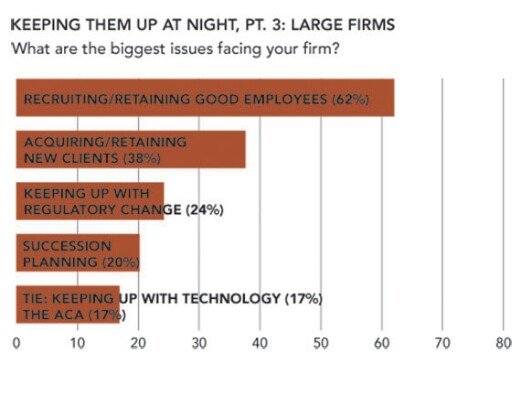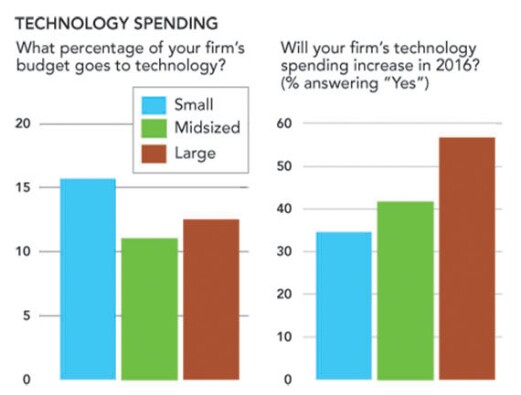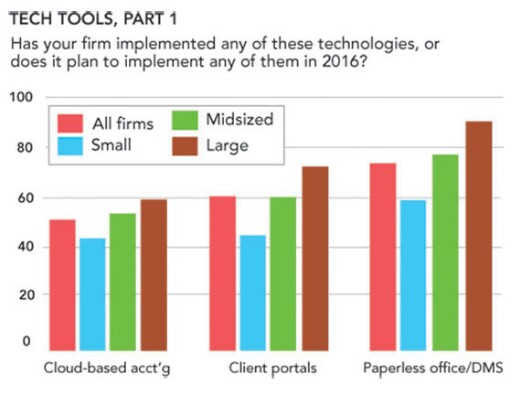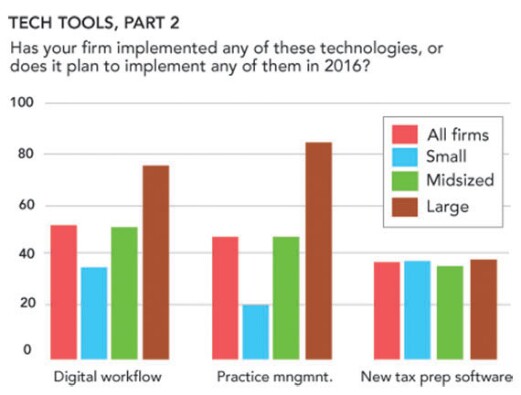
Predictions and Plans for the New Year

Growth Expectations, Pt. 1
Breakdown for small firms: Over 10 percent -- 32.1 percent; 8-9 percent -- 2.8 percent; 6-7 percent -- 5.7 percent; 4-5 percent -- 15.4 percent; 2-3 percent -- 17.1 percent; 1 percent -- 6.5 percent; flat or decline 20.3 percent. There was a big jump in small firms expecting to growth over 10 percent -- almost a third this year, as opposed to less than a quarter last year (22.7 percent).

Growth Expectations, Pt. 2
Breakdown for large firms: Over 10 percent -- 21.3 percent; 8-9 percent -- 9 percent; 6-7 percent -- 16.9 percent; 4-5 percent -- 22.5 percent; 2-3 percent -- 19.7 percent; 1 percent -- 3.4 percent; flat or decline 7.3 percent. The number of large firms expecting growth between 2 and 3 percent dropped from over 30 percent last year to under 20 percent this year, with the gains spread throughout the higher categories.

Biggest Issues: Small Firms

Biggest Issues: Midsized Firms

Biggest Issues: Large Firms

Tax Season Expectations

Making Plans

New Services
Payroll was the service with the most penetration -- 65 percent of firms already offer it, and 6 percent plan to add it in 2016.

Technology Spending

New Technologies, Pt. 1

New Technologies, Pt. 2
-- Customer relationship management software, which only 34 percent of all firms either had already implemented or planned to implement in 2016
-- New billing software, which only 31.5 percent of all firms either had already implemented or planned to implement in 2016.

New Technologies, Pt. 3
Large firms are also much more likely to let staff work remotely -- 77 percent of them allow it, versus 57 percent of midsized firms and 58 percent of small firms.






